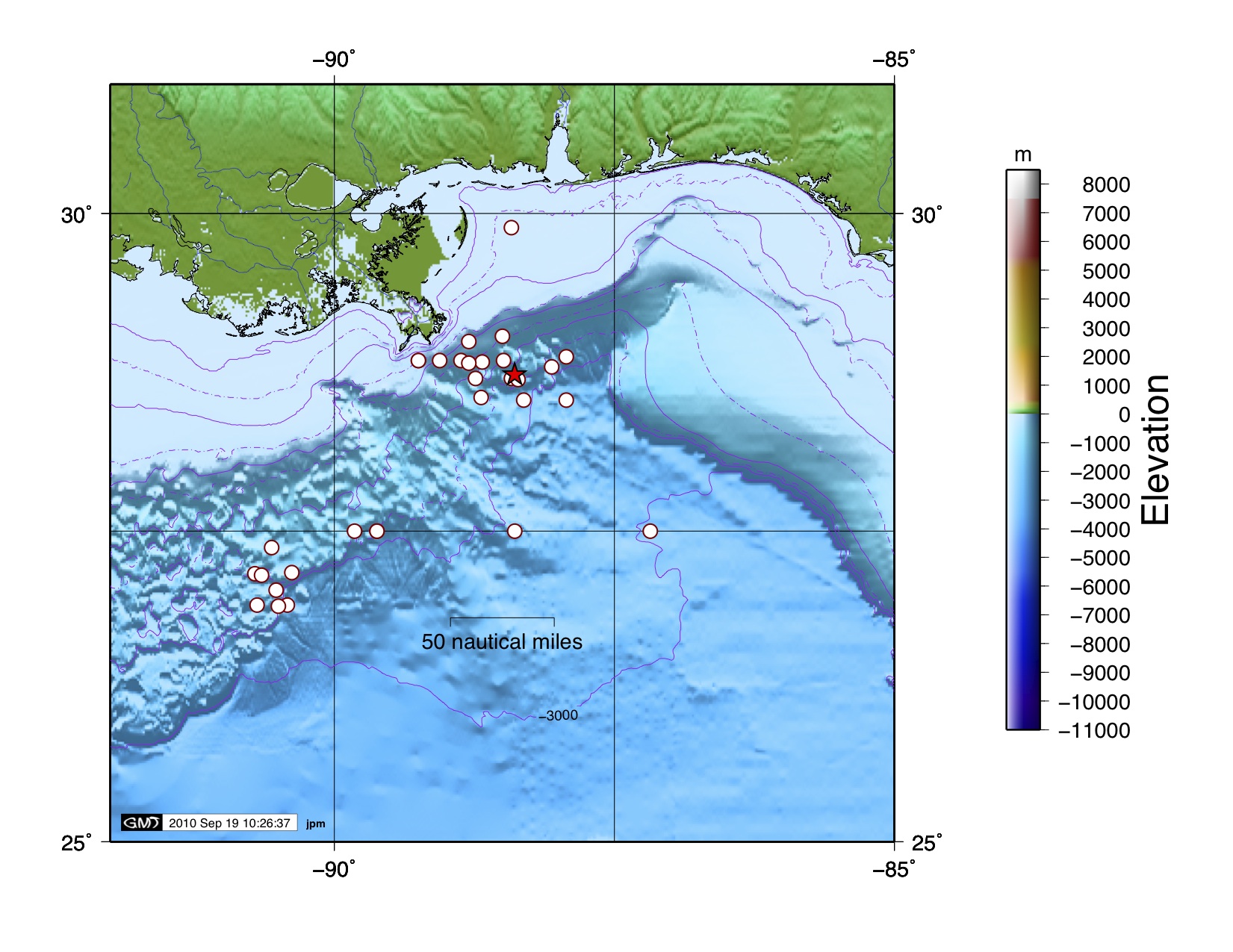 ©2020 Biological and Chemical Oceanography Data Management Office.
©2020 Biological and Chemical Oceanography Data Management Office.Funded by the U.S. National Science Foundation
From the NSF proposal abstract
This project will study the interplay of physical, chemical, and biological factors in supplying nitrogen, an essential nutrient, to temperate coastal and offshore waters of the Gulf of Mexico. The Gulf is an economically important but understudied marginal sea with major commercial and recreational fisheries as well as extensive fossil fuel deposits. Diazotrophic (N2-fixing) cyanobacteria bloom regularly in offshore and coastal waters of the Gulf and the limited data suggest that they contribute significant quantities of both nitrogen and carbon to the pelagic food web. These diazotrophs may play also a critical role in supplying N to other organisms, including the ichthyotoxic red tide dinoflagellate Karenia brevis. Despite its importance, little is currently known of the factors that promote N2-fixation in the Gulf or the relative significance of different physical and biological processes in creating conditions that favor N limitation in the water column. The Gulf of Mexico is strongly influenced by both riverine inputs and advective processes, providing an excellent model system for studying nutrient dynamics, physical forcing of productivity, terrestrial-oceanic linkages, and the potential impact of land use and climate change on marine ecosystems.
The relatively small basin of the Gulf of Mexico provides an opportunity to quantify and study interactions among physical, chemical, and biological processes relevant to a broad range of other coastal and oceanic systems. Land-use and climate change are likely to affect the circulation and hydrography of the Gulf, as well as the magnitude and nature of riverine inputs, all with uncertain impacts on the biogeochemistry of the Gulf of Mexico. This research will provide timely insights into these processes and will generate a baseline of understanding for evaluating and predicting the impact of future land use and climate changes in the system. This project will make an important contribution to our understanding of the factors that regulate N2-fixation and its role in supporting the biota in temperate waters. The following specific goals are included in the work:
1. Identify the major diazotroph groups in the Gulf of Mexico and characterize their distribution and activity in different regions and water masses.
2. Quantify the impact of advective processes, mesoscale features, and riverine inputs on nutrient limitation and N2-fixation in the Gulf, and evaluate the controls on N2-fixation and the degree of spatial and temporal niche differentiation among diazotroph assemblages in different regions affected by these processes.
3. Use satellite data and physical models to scale up our measurements spatially and to evaluate the regional significance of N2-fixation in the Gulf of Mexico. The researchers will also use a coupled physical/biological model to explore variability in the physical forcing and the potential impact of likely land use and climate change scenarios in altering nutrient dynamics and N2-fixation in the Gulf of Mexico.
The investigators and their institutions have a strong commitment to undergraduate and graduate education. This project includes support for graduate students, a technician, and undergraduates. In addition to peer-reviewed papers and websites, workshops aimed at K-12 teachers, and a program involving high school teachers in research will be used to disseminate the results of this project broadly in the local community. The investigators are committed to increasing the diversity of the ocean science community and are active in recruiting and training efforts at their institutions.

Lead Principal Investigator: Joseph Montoya
Georgia Institute of Technology (GA Tech)
Principal Investigator: Tracy A. Villareal
University of Texas at Austin (UT Austin)
Contact: Joseph Montoya
Georgia Institute of Technology (GA Tech)
BCO-DMO Data Manager: Stephen R. Gegg
Woods Hole Oceanographic Institution (WHOI BCO-DMO)
Gulf of Mexico - Deepwater Horizon Oil Spill [GoMX - DHOS]
Ocean Carbon and Biogeochemistry [OCB]